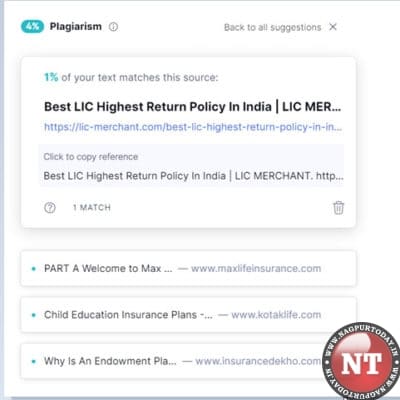Life insurance is a unique type of financial product that can help you reach several financial goals, the most important one being your family’s future security. A life insurance calculatorwill help you decide on a plan keeping in mind your various needs. Let’s learn about different life insurance plans and their features.
- Term Insurance:
Term insurance is affordable. Financial protection is given to the nominee if the policyholder passes away during the policy’s term. This money ensures your family can pay their bills if you pass away.
- Life cover: Offers high life cover for a small premium.
- Fixed premium: The premium and the amount of life cover are set when the policy is chosen and bought. It will stay the same for the chosen term.
- Longer cover: This can cover you after you turn 60 with a fixed premium for the whole time.
- Payout options: The payout can be a single payment or annual/monthly payments, or a combination of both.
- Optional accidental death coverage: You can add accidental coverage at the time of purchase or later.
- Terminal illness benefit: Some plans can pay a considerable insurance cover amount when you are diagnosed with a terminal illness.
- Waiver of premium: If an accident leaves the policyholder permanently disabled, the company pays all future premiums. The life cover stays the same.
- Child insurance plans:
Child insurance plans are made to help you take care of your children’s protection and savings.
- Fund power: Choose to invest in a wide range of funds to save money
- Flexible premiums: Premiums can be paid regularly or at once.
- Benefit variety: Some plans for child insurance give you extra loyalty and wealth boosters that get added to the lump sum amount when the policy matures. The child will get the full cover amount if something unfortunate happens to the life insured during the policy term.
- Premium waiver: If a parent passes away during the policy term, some new child insurance policies don’t require future premium payments. The policy pays a lump sum death benefit to the other parent. The insurance company will also pay all future premiums.
- Money-back insurance plans:
With these plans, you can get both life insurance and savings at the same time. Money-back plans add to your savings and give youlife insurance meaning you protect yourself and your family and can build wealth over time and get closer to your financial goals.
- A second source of income: This can be used for a child’s education, a vacation, and other daily and monthly needs.
- Maturity benefit: A money-back insurance plan also gives a lump sum maturity amount at the end of the policy term that can include additions and bonuses.
- Endowment plans:
An endowment plan is a type of life insurance that gives you insurance coverage and a way to save money. It helps you save regularly over a specific period.
- Steady return: When your endowment plan policy ends, you get a lump sum that includes your maturity benefit and any bonuses with fewer risks.
- Life cover – In the event of the policyholder’s demise, the insurance company pays the full amount of the life cover to the person named in the policy as long as the policy’s terms and conditions are met.
- ULIP:
ULIP, which stands for “Unit-Linked Insurance Plan,” is a type of insurance that combines protection and wealth creation into one plan.
- Life cover: The nominee(s) get financial protection through a death benefit. The policyholder receives the maturity benefits if they live until the end of the ULIP’s term.
- Choice of funds: You can invest in several different funds based on your needs.
- Wealth boosters: Some ULIPs offer regular wealth boosters as a percentage of the premium paid.
- Loyalty bonus: This adds to your corpus at the end of the plan.
- Investment strategies: Investors have a choice of 3–4 portfolio strategies to improve returns.
- Partial withdrawal: Take out some of your money after the 5th year, giving you more cash.
- Fund switch – Move your money between equity, debt, and balanced funds tax-free.
- Return of charges: Some policies give back the full cost of insurance and the cost of running the policy when they mature.
- Whole life insurance:
This gives extended cover and helps protect the nominee financially.
- Special needs: Whole life plans are best for people who will need money for a long time, like if they have children with special needs or a financially dependent spouse.
- Level premium: With a whole-life plan, the premium stays the same for the whole time you have the policy. This means you can pay less as you get older.
*Please note that Section 80C of the Income Tax Act says that the premiums of any life insurance plan can be used to claim tax deductions from your taxable income. Under Section 10, the amount paid on a death claim may not be taxed (10D). The taxation varies in the old and new tax regimes and is subject to change.
















